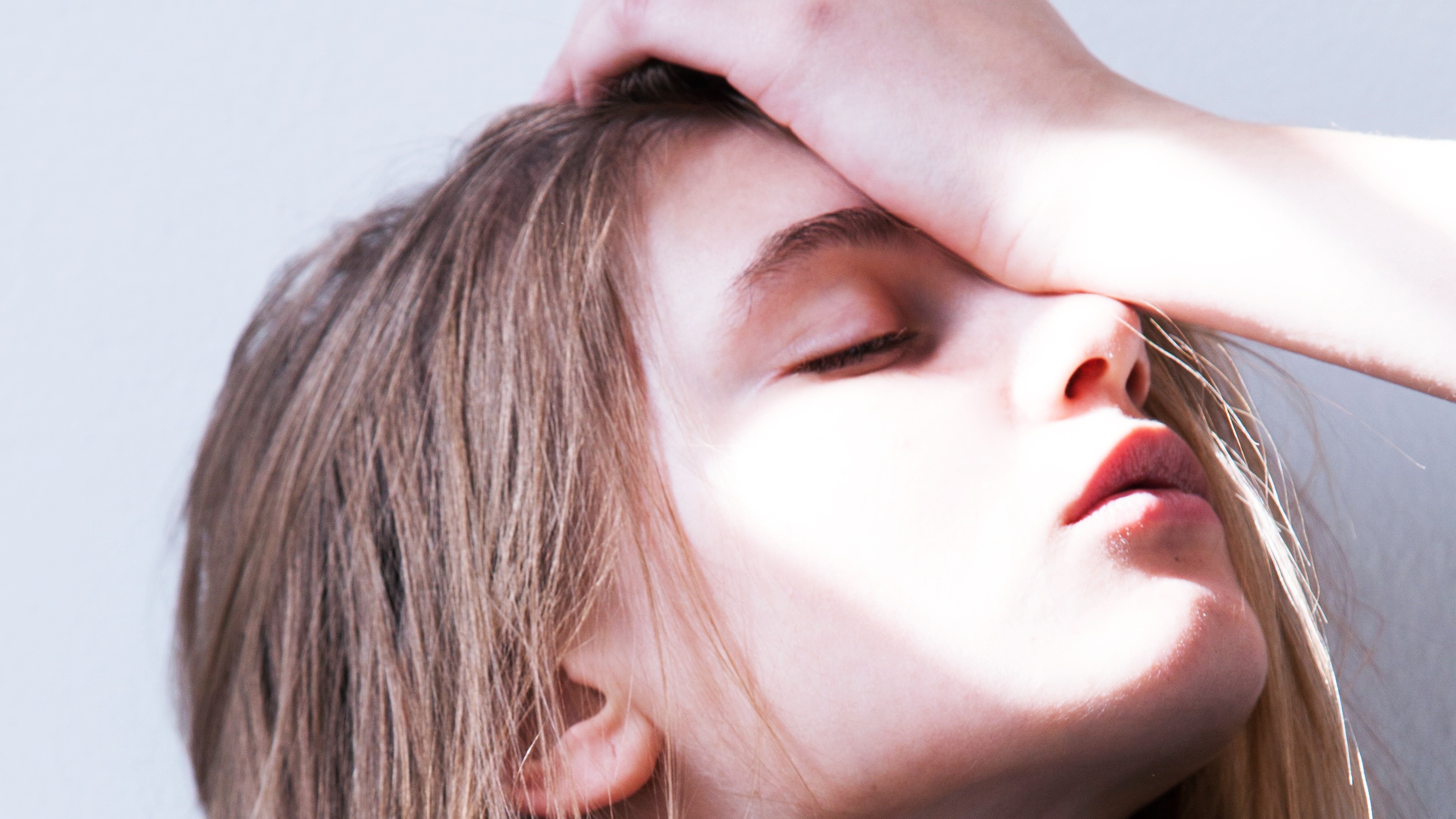[vc_row][vc_column][vc_column_text]All of you reading this article, at some point in your life, have experienced a headache on top of head, and it is probably safe to assume that you did not enjoy the experience. Did you feel a heaviness and pressure that made it difficult for you to focus and continue with your daily routine? If so, you’re not alone.
Sometimes, all it takes to get rid of this nuisance, aka a top of head headache, is an over-the-counter medication, some food or coffee or another drink, or even a short break and rest to relieve the symptoms. However, sometimes, your headache is a bigger problem and takes longer to resolve. For many of you, you might have experienced a lot of headaches. You might have also noticed that sometimes the experience is similar, and on other occasions, the symptoms and pain seem slightly different. This is because there are over 300 types of headaches and only 10% of these headaches have an identifiable and known cause.
In this article we will discuss the different types of headaches, helping you better understand the different causes of some of the most common types of headaches and how they differ. We will also discuss various medications and products that can be effective treatment methods for your headache.
Before we begin our discussion on the different types of headaches, it is important to note that they overlap significantly in their symptomatology. Headaches result in a pressure like sensation that is often localized near the top of your head, making it feel as though there is a tight band or weight placed on the crown of your head. Depending on the type of headache you are experiencing, this pain may radiate across your head, potentially causing subsequent pain in your neck or other areas of your head.
We will split our discussion of headaches into two main groups of headaches: primary and secondary.
Related Article: Headache Remedies To Try Before Reaching For The Pill Bottle
Primary Headaches
Primary headaches are not caused by another condition; the headache embodies the condition itself. Some primary headaches can be felt as a throbbing headache on top of head. Different types of primary headaches may be experienced as a headache on top of head.
Types of Primary Headaches
Tension Headaches


Tension Headaches – Symptoms
As previously mentioned, the discussion on symptomatology with the different types of headaches that we will be discussing in this article will overlap. So, what are some of the symptoms you may experience with a tension headache? As with most types of headaches, you will experience a dull pain in your head, neck, and often near your temples, which may vary in severity. Many people who have experienced tension headaches describe the pain as a pressure-like pain, as though there is a tight band around their forehead. You may also experience tenderness around the forehead and scalp. It is important to note that people often mistake tension headaches as migraines due to the intermittent intense pain they may feel; however, they are different. We will further discuss migraine headaches below, but one of the key differences is that migraine headaches can lead to nausea and vomiting, which does not occur in tension headaches. In some rare cases, you may also find that you are more sensitive to light and loud noise with tension headaches, which also occurs with migraines.
Tension Headaches – Causes
So, what can cause tension headaches? They are essentially caused by musculoskeletal contractions in the head and neck that can result from a variety of different triggers. They can be caused by staring at a computer screen for extended periods of time, bad posture, driving for long periods, or even cold temperatures that lead to muscular contractions. There is an extensive list of other causes for tension headaches, including alcohol, eye strain, generalized fatigue, smoking, cold, flu, or other illness, sinus infections, reactivity to caffeine, poor posture, and stress. As seen with this list which does not cover all of the potential causes, tension headaches can be a result of anything that can lead to the generalized muscular contractions in your head and neck.
Migraine Headaches
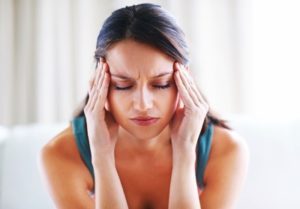

Migraine Headaches – Symptoms
So how are migraines different from other types of headaches? Migraines can occur with what is called an aura, which refers to sensations that one experiences before they actually get a migraine. Aura sensations usually occur 10 to 30 minutes before the onset of a headache, or perhaps a throbbing headache on top of head. Typically, you’ll also experience some difficulty thinking and see flashing lights or unusual lines in your vision. In addition, your face or hands may tingle or become numb.
Migraine headaches can also occur without an aura. Interestingly, migraines can be split into different stages. It first starts with the prodrome stage, which occurs one or two days before a headache itself occurs. During this stage, one may experience food cravings, depression, fatigue, irritability, and neck stiffness, amongst other symptoms. Additionally, the aura occurs after the prodrome stage. After this initial stage, the attack phase occurs when an actual headache and other symptoms occur. It is during this stage that the symptoms are most severe. The symptoms can last anywhere from a few hours to a few days.
The symptoms you may experience from a migraine vary individually, and these symptoms include:
- Increased sensitivity to light and sound
- Nausea and/or vomiting
- Dizziness or feeling lightheaded
- Intense head pain may be on either one or both sides of your head or near your temples. In addition, headache on top of head may occur.
- After this stage, individuals often experience the final stage, the postdrome phase. During this phase, one usually experiences changes in their mood and feelings, and as previously mentioned, these symptoms will vary individually. One may feel euphoric while one may feel tired. During this stage, a milder headache can still persist which is less severe than a headache experienced during the attack phase.
Migraine Pain and Nausea
Apart from the symptomatology that one may experience from a migraine, the severity and pain also differ from tension headaches. People often describe migraine pain as the feeling that their head is pulsating, throbbing, or pounding. As previously mentioned, the pain can also be steady and can vary from mild to severe. The pain is usually localized to either the front of the head, near the forehead area or on one side of the head, but the can affect both sides or shift. This pain typically lasts around 4 hours, but this length can be as long as 72 hours, especially if they are not treated or do not respond to treatment.
The other distinct symptom for migraines is that over half the people who experience them list nausea as one of the symptoms. This lingering nausea also often leads to vomiting. Obviously, experiencing either or both of these symptoms tends to make the pain and distress from a headache even worse.
Cluster Headaches
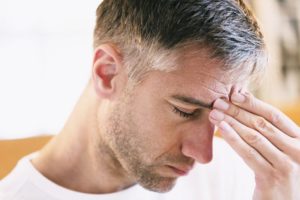

There are two types of cluster headaches that we will discuss in this article: episodic and chronic. As their names imply, episode cluster headaches occur regularly between one week and one year, but they are followed by a period of a month or more in which you are headache-free. Chronic cluster headaches occur for a period longer than a year, and the headache-free period often only lasts under a month.
Cold Stimulus Headaches – “Brain Freezes”
Now you might be questioning how brain freezes might be considered a type of headache; however, they are classified as a headache that is shorter in duration. All of you reading this article will most likely have experienced a brain freeze at some point in your life. The medical term for a brain freeze is sphenopalatine ganglioneuralgia, also referred to as a cold-induced headache. They are called this because they are caused by the sphenopalatine ganglioneuralgia (SPG) nerves, which are a group of nerves near the trigeminal nerve in the brain. They are located behind the nose, also responsible for causing headache pain. It is also thought that these nerves have a protective role, as they are highly sensitive to pain.
Brain Freeze Symptoms
So, what are symptoms one experiences when they have a brain freeze? It is typically characterized by a sharp and sudden onset of pain near the front of the head that can last anywhere from a few seconds to a few minutes. Some people note a headache on top of head, not so much a throbbing headache on top of head, but more of a pressure-like feeling.
The duration of pain varies depending on the amount of cold food or liquid that was consumed and how quickly it was consumed. Interestingly, scientists aren’t sure what the exact cause and mechanism of a brain freeze are. One study was done by measuring the blood flow and activity in the brain as multiple participants drank ice water. The researchers involved initially hypothesized that the cold food or liquid changed the blood flow in the brain. They used a Doppler, which measures blood flow, to look at the activity of arteries in the front and middle of the brain. Their results found that ice water increased blood flow in the front brain arteries and did not affect the middle arteries. In addition, it led to subsequently increased resistance in the brain. With their results, they suggested that the brain freeze may be your body’s reaction to the cold, specifically your brain’s blood vessels. As you are probably already aware, treatment for brain freeze is simple and no medication is required. All you need to do is press your tongue to the roof of your mouth until the pain starts to dissipate.
Occipital Neuralgia
Occipital neuralgia is a distinct type of headache, primarily due to where the pain originates and the type of pain you experience. Similar to brain freezes, this type of headache occurs due to irritation or injury to the occipital nerves, which start from where the spine meets the neck and run further up to the scalp at the back of the head.
It is important to note that this type of headache can be both primary or secondary. This type of headache can be secondary if resultant of a different cause, such as head trauma, pinching of the nerves, osteoarthritis, gout, infection or inflammation, or other causes. Given the location of these nerves, the pain one experiences when they have occipital neuralgia is a piercing, throbbing, or even electric-shock-like pain in their upper neck and back of the head. This type of headache can be diagnosed with a positive response following an anesthetic nerve block.
Exertional Headaches
Exertional headaches, as their name implies, are brought on as a result of physical exercise. This physical exercise is typically strenuous in nature, which can be running, jumping, lifting weights, sexual intercourse, or even long bouts of coughing or sneezing. Unfortunately, as with most types of headaches, the duration and severity of this type of headache can vary drastically between individuals. They can be short-lived, around an hour, or they can last up to two days. However, you can’t distinguish this type of headache, as they present as a throbbing pain that radiates throughout the head, not localized to a specific region, such as a headache on top of head. Instead, you’ll feel more of an all-over pain.
Hypnic Headaches
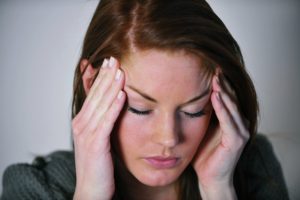

Top Related Article: Types of Headaches
Secondary Headaches
As previously mentioned in the article, this is the second large group of headaches. If you are experiencing headache on top of head, it may be related to a secondary headache. Unlike primary headaches, secondary headaches occur as a symptom of a different condition or cause. We will be discussing some of the different types of secondary headaches below.
Types of Secondary Headaches
Sleep Deprivation Headaches


A lack of sleep essentially causes negative effects in every single system of your body. Chronic sleep deprivation and chronic insomnia can disrupt your central nervous system’s ability to properly send information. Your ability to process and retain new information is negatively affected and your ability to recall previously obtained information may be delayed. Similarly, it can affect your mental and emotional state, making one more prone to mood swings. The effects on this system can also lead to intermittent headaches as a result of the sleep deprivation. If you don’t sleep enough, you may experience a headache on top of head.
We will briefly mention that chronic lack of sleep is extremely dangerous and can also lead to negative effects on your immune, respiratory, digestive, cardiovascular, endocrine, and other systems. Fortunately, many of these effects and symptoms, including headaches, that result from sleep deprivation can be reversed by simply getting enough rest.
Top Related Article: What Causes Migraines And Can They Be Prevented?
Sinus Headaches


Caffeine-related Headaches
This may seem contrary to the information that you’ve read or seen previously since caffeine is often cited as a source of relief for headaches. Interestingly enough, caffeine can also be a headache trigger. The main reason there is information to support both of these claims is that the effects vary greatly depending on the dose of caffeine and how much caffeine you typically consume on an average day. The discussion of caffeine-related headaches in this article occurs from those who are suffering from headaches triggered by caffeine withdrawals. Researchers who have previously studied caffeine have determined that headaches are typically resulting from chronic heavy caffeine consumption. It can also be caused acutely if an individual consumes more than 400 milligrams of caffeine, which is around 4 cups of coffee. For chronic caffeine consumers, which are defined as anyone who consumes over 200 mg daily for a period of over 2 weeks, withdrawal from caffeine can result in migraine-like headaches.
Along with a headache, the onset of other symptoms, including generalized fatigue, difficulty concentrating, irritability, and even nausea all start around 24 hours after an abrupt cessation of caffeine. But as previously mentioned, if you are an individual who does not consume large amounts of caffeine every day, a small amount of caffeine (e.g. a cup of coffee) can provide relief.
Head-Injury Headaches
For the purposes of this article, we will be focusing on headaches that occur following mild traumatic brain injuries (TBI), which include milder forms of closed head injuries. This is because headaches can also be resultant from more severe forms of TBI, but these require the immediate attention of medical professionals, as they can be life-threatening and may require surgical intervention.
First, let’s define TBI. In simple terms, TBIs occur when the head is hit, whether by an object or struck. Closed head injuries are defined when the injury results with no entry through the skull into brain tissue; however, if severe, these can also lead to devastating results. Following a TBI, it is important to first rule out some of these dangerous conditions, and once you have been cleared, you may notice that you are experiencing a headache. This is common as headaches occur in up to 90% of people who have experienced symptoms from mild head injuries. Generally, around 85% of these headaches are tension headaches, similar to those previously discussed in the article. The key difference is that, as we have already mentioned, a tension headache is secondary to the trauma, which is the cause of the headache.
These headaches may develop immediately or soon after the injury occurs. However, depending on the severity of the injury, one may also experience loss of consciousness, seizures, memory loss, vomiting, confusion, sensory changes, including vision or hearing problems, and other symptoms. It is also important to note that if you notice any of these symptoms following a head injury that you seek immediate medical attention.
Menstrual Headaches


Hangover Headaches
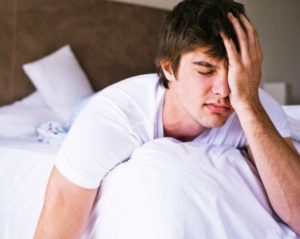

Rarer Types of Headaches
We will briefly mention and discuss two rarer types of headaches: reversible cerebral vasoconstriction syndrome (RCVS) and hypertension headaches. RCVS is a rare condition in which the blood vessels in the brain constrict. This constriction results in a severe headache near the top of the head that is often referred to as a “thunderclap” headache. This condition may lead to secondary life-threatening conditions including strokes, brain bleeding, seizures, vision changes, or other symptoms.
Hypertension headaches are a rare form of headaches in which pressure builds up in the cranium due to critically high blood pressure. It is currently unclear as to whether there is a causational relationship between high blood pressure and headaches; however, hypertension headaches occur when you experience an event called a hypertensive crisis. This sudden and extreme increase in blood pressure results in a headache that is different from migraines or the other types of headaches described in this article.
Treatment
Now that we’ve discussed many types of headaches, it is important to note at this point in the article, the reason that it is pertinent that you properly diagnose the type of headache you have is that the treatment methods between the varying types are different. We will be covering the treatment methods for the different types of headaches that we have discussed above in the article.
For tension headaches, over the counter pain relievers, including aspirin, acetaminophen, ibuprofen, or even naproxen can help. However, it is extremely important that you do not take too many of these medications as they can result in rebound headaches that do not respond to the medication and are worse in severity. You can also use other supportive care measures like decreasing visual and auditory stimulation and using a heating pad to help relieve the tension in the muscles around your head and neck that may be causing the headache.
For migraine headaches, a class of drugs, called triptans, are the most commonly used form of treatment. These include a large list of various drugs that you can take orally, intramuscularly, or nasally. Similar to tension headaches, you can also use aspirin and nonsteroidal anti-inflammatory drugs (NSAIDs), which include ibuprofen and naproxen when you first start experiencing migraine symptoms.
Interestingly, for cluster headaches, these types of drugs work in theory; however, they do not work quickly enough, making it seem as though they are ineffective. It has been found pain medicines such as lidocaine have provided relief for some people. Because cluster headaches can occur episodically or chronically, preventative measures are best for treatment.
As previously discussed, for headaches related to a brain freeze, simply place your tongue on the roof of your mouth until the pain subsides. It is thought that the heat from your tongue helps dissipate the cold, leading to relief of symptoms.
For occipital neuralgia, supportive care measures including heat, rest, physical therapy, massage, NSAIDs, and other muscle relaxant medications can help improve symptoms. As previously mentioned in the article, nerve blocks can not only be useful in properly diagnosing the condition, but they can also help alleviate pain.
The same general supportive care measures apply for exertional, hypnic, and sleep deprivation headaches: rest, heat, NSAIDs, massages, etc.
Sinus headaches are one of the specific headache types where treatment is important. Because the headache is resultant from potential sinus infections, using the previously mentioned treatment methods above won’t solve the actual cause of the problem. Like most sinus infections, you will need to use supportive care measures for sinus related issues, including nasal decongestants, and if the infection is severe enough, you will need to get a prescription for antibiotics in order to properly treat the problem.
Caffeine-related headaches can use similar supportive care measures, but it is important that you properly assess how much caffeine you are consuming daily and slowly taper down your dosage. Stopping the use of caffeine suddenly will not provide relief and may lead to withdrawal symptoms, including a headache on top of head.
Menstrual headaches can be treated with hormonal therapy in combination with the previously mentioned treatment methods to help tackle the hormonal imbalances that may be causing headaches.
For hangover headaches, simply try to limit the amount of alcohol you are consuming. In addition, drink water in between alcoholic beverages and before going to bed to help prevent headaches. Also, avoid drinking on an empty stomach.
Seek medical attention from a neurologist, or your general care doctor if:
- You start experiencing any of these symptoms and none of the treatment methods listed above provide relief
- You notice headache top of head, or any type of headache, is increasing in frequency
- Symptoms continue to get worse
A neurologist can properly diagnose the type of headache you are experiencing and help get the proper treatment plan in place. Although this article was written as a comprehensive guide for some of the most common types of headaches, there are other types of headaches that may cause a top of head headache. Please do not use this guide to self-diagnose your condition. Again, follow up with your primary care provider or neurologist.[/vc_column_text][/vc_column][/vc_row]
